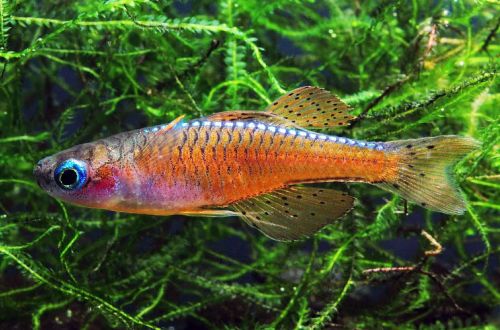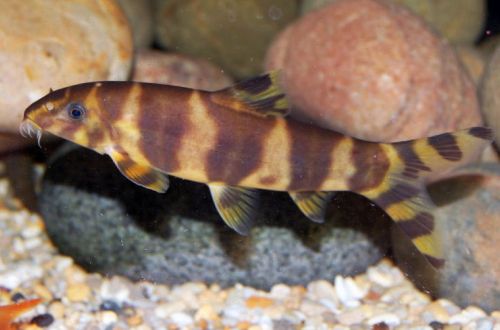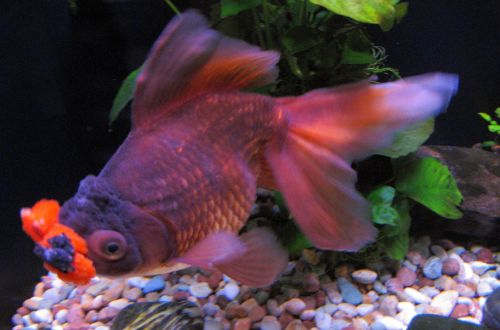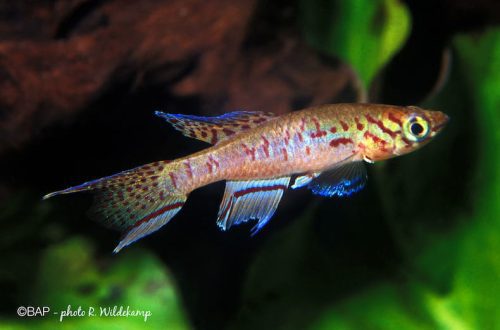
Pseudomugil Paskai
Blue-eye “Red Neon” or Pseudomugil Pascay, scientific name Pseudomugil sp. “Red neon”, belongs to the Pseudomugilidae family. A relatively new species in the aquarist, it appeared on sale in 2011. This is a beautiful miniature fish that can live in a small group or even alone. Unpretentious and easy to maintain. Given its size, it can be used in nano aquariums.

Contents
Habitat
Occurs from the southwestern part of the island of New Guinea from the territory belonging to Indonesia. It lives in numerous streams and rivers flowing into the Arafura Sea. It occurs in areas with dense aquatic vegetation and flooded coastlines. The natural habitat is characterized by muddy brown waters with a high organic content.
Brief information:
- The volume of the aquarium – from 40 liters.
- Temperature – 18-26°C
- Value pH — 6.5–7.5
- Water hardness – soft (2-12 dGH)
- Substrate type – any
- Lighting – subdued / moderate
- Brackish water – no
- Water Movement – Low/Moderate
- The size of the fish is up to 3.5 cm.
- Food – any food, mostly meat
- Temperament – peaceful active
- Keeping in a small group or flock
Description
Adults reach a length of about 3.5 cm. The color is orange with a blue back. The eyes also have a bluish color. This feature is reflected in the name of this species. The fins are translucent with black dots. In males, the dorsal and pectoral are much longer than in females.
Food
They prefer live food, such as brine shrimp and daphnia. However, they can adapt to dry products of a suitable size. In this case, it is worth giving preference to feed floating on the surface.
Maintenance and care, decoration of the aquarium
A group of 8-10 fish will feel quite comfortable in a tank of 40 liters or more. The design uses a large number of plants that have groups to save free areas for swimming. The presence of shelters in the form of snags, roots and branches of trees is welcome. Any substrate, the soil is selected based on the needs of plants. The lighting is subdued. Floating vegetation can serve as an additional means of shading the aquarium.
In the process of keeping and servicing the fish, a high content of dissolved oxygen in the water and a moderate flow should be ensured. Do not start Pseudomugila pausing in a biologically immature aquarium and avoid fluctuations in the hydrochemical composition of the water.
Behavior and Compatibility
Peaceful calm fish. Due to the modest size of Blue Eyes “Red Neon”, only species of similar size and temperament can be used as neighbors. Content in pairs or groups is acceptable.
Breeding / breeding
Breeding blue eyes in a home aquarium does not cause much difficulty. With the onset of the mating season, the females lay their eggs among the thickets of plants. For these purposes, small-leaved undersized species, or mosses, for example, Javanese moss, are best suited. During spawning, which lasts several days, the dominant male fertilizes several clutches from different females at once. Parental instincts are not developed. Adult fish can eat their own offspring.
In order to preserve the brood, the eggs are timely transferred to a separate tank with identical water conditions. In it, the fry will be until they grow large enough. This separate tank is equipped with the same set of equipment as the main aquarium. The exception is the filtration system, in this case it is worth using a simple airlift filter with a sponge as a filter material. It will provide sufficient cleaning and avoid accidental suction of fry.
The incubation period lasts about 10 days, depending on the temperature. In the first days of life, micro-feed, such as ciliates, will be required. A week later, you can already serve Artemia nauplii.
Fish diseases
Health problems arise only in case of injuries or when kept in unsuitable conditions, which depresses the immune system and, as a result, provokes the occurrence of any disease. In the event of the appearance of the first symptoms, first of all, it is necessary to check the water for the excess of certain indicators or the presence of dangerous concentrations of toxic substances (nitrites, nitrates, ammonium, etc.). If deviations are found, bring all values back to normal and only then proceed with treatment. Read more about symptoms and treatments in the Aquarium Fish Diseases section.





